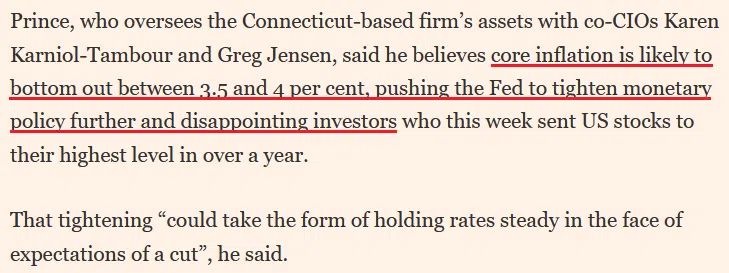Yields Rip and Gold Slips
Interest rates soared on Jul. 20, as economic outperformance remains intact. Will the theme continue?
While pivot hopes have uplifted gold recently, a realization contrasts the realities on the ground. In other words, it would take a major economic earthquake for the Fed to cut interest rates, and that’s not present in the data.
For example, initial jobless claims came in at 228,000 versus 242,000 expected on Jul. 20, and the metric measures the number of Americans who file for unemployment for the first time. Moreover, with initial jobless claims declining to a two-month low, the strength does not support a dovish pivot anytime soon.
Please see below:

To explain, while first-time unemployment filers have increased steadily over the last 12 months, the sharp decline on the right side of the chart pushed the metric to its lowest level since mid-May. Therefore, with job openings still well above their pre-pandemic baseline and initial jobless claims falling, the U.S. labor market remains on solid ground, and that’s bearish for silver and the GDXJ ETF.
To that point, the University of Michigan released its Consumer Sentiment Index on Jul. 14. The report stated:
“Consumer sentiment rose for the second straight month, soaring 13% above June and reaching its most favorable reading since September 2021. All components of the index improved considerably, led by a 19% surge in long-term business conditions and a 16% increase in short-run business conditions.
“Overall, sentiment climbed for all demographic groups except for lower-income consumers. The sharp rise in sentiment was largely attributable to the continued slowdown in inflation along with stability in labor markets.”
Please see below:

To explain, while it’s risen off a low base, the sharp increase on the right side of the chart shows how lower inflation and a resilient labor market have increased Americans’ optimism. So, while the USD Index suffered from misguided pivot hysteria, the economic fundamentals support higher interest rates and a stronger U.S. dollar.
As further evidence, the University of Michigan report added:
“Year-ahead inflation expectations were little changed, inching up from 3.3% in June to 3.4% in July and down from the high point of 5.4% from April 2022. Long-run inflation expectations were also virtually unchanged from June at 3.1%, again staying within the narrow 2.9-3.1% range for 23 of the last 24 months.”
Thus, with short and long-term inflation expectations still above 3%, they don’t align with the Fed’s 2% mandate. And again, please remember that with base effects gone, the easy part is over, and inflation should continue to rise in H2 2023.
Inflation’s Reign
Bridgewater Associates’ Co-Chief Investment Officer Bob Prince – who helps run the world’s largest hedge fund – said on Jul. 14:
“Inflation has come down but it is still too high, and it is probably going to level out where it is; we’re likely to be stuck around this level of inflation. The big risk right now is that you get a bounce in energy prices when wages are still strong….
“Current levels of spending are being financed by income, not a credit expansion, so inflation is really hard to bring down.”
Remember, we warned for months that record-high checkable deposits and wage growth would fuel demand-driven inflation. And with the merry-go-round still spinning, consumer spending is at levels that encourage companies to raise their prices.
Consequently, with wage inflation still abnormally high and oil prices rebounding, month-over-month (MoM) inflation should increase and keep the Fed hawkish for longer than expected.
Please see below:

Speaking of which, please see the S&P GSCI's (commodity index) performance.

To explain, the candlesticks above track the monthly movement of the S&P GSCI. If you analyze the plethora of red candles, you can see that commodity prices have declined for several months. And with base effects also in play, the gambit helped lower inflation.
However, if the green candle on the right side of the chart holds, the S&P GSCI’s monthly gain in July will be the largest since March 2022. As such, investors should take notice as the strength filters through the headline Consumer Price Index (CPI) over the medium term.
Overall, AI optimism has the S&P 500 riding high, as stock investors assume that real economic issues are irrelevant in their digital world. But that logic is fraught with peril, and Big Tech is just as cyclical as anyone else. As a result, it’s likely only a matter of time before another Minsky Moment strikes the financial markets, and the PMs are unlikely to celebrate the volatility.
Do you think inflation will worsen in the second half of 2023?
Alex Demolitor
Precious Metals Strategist